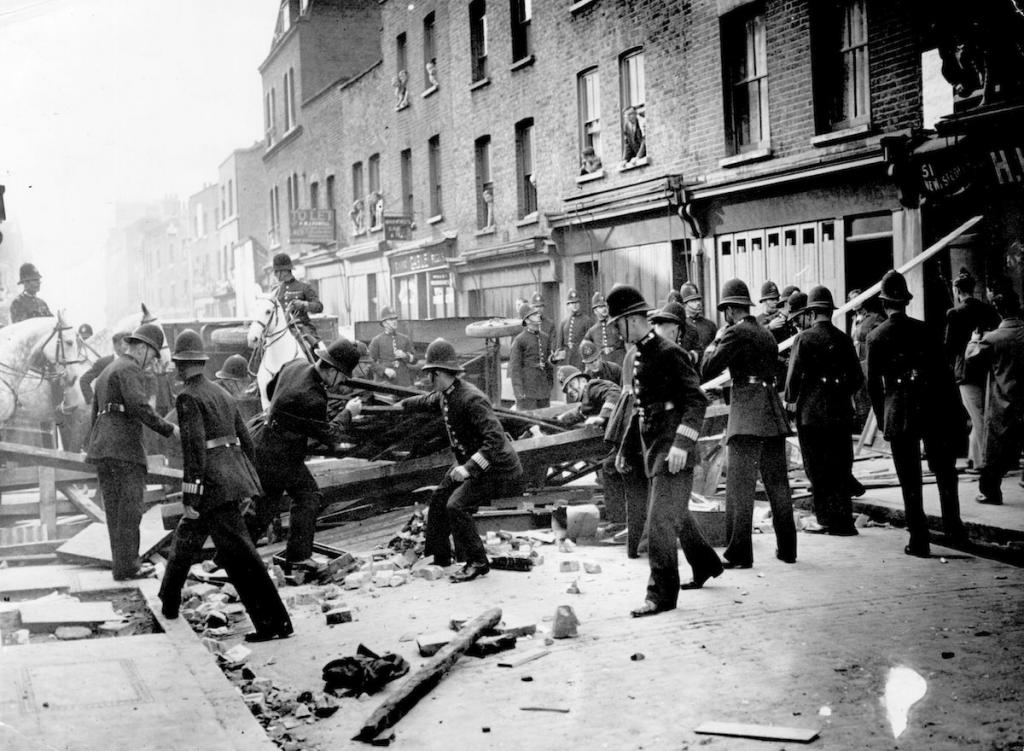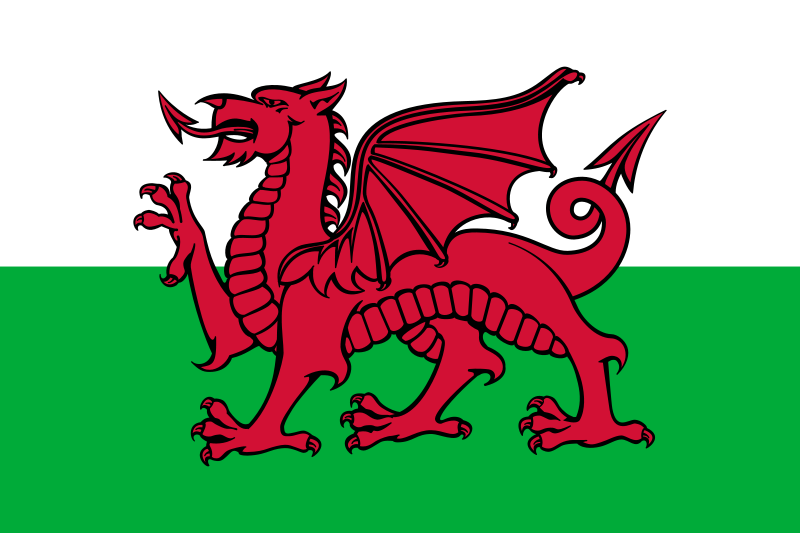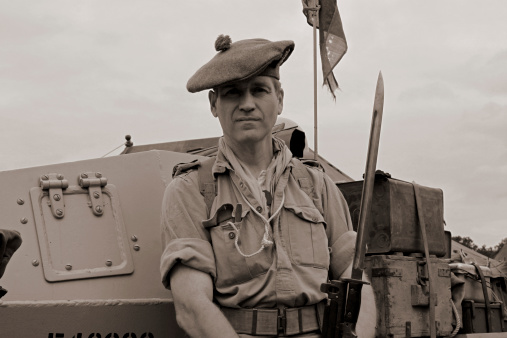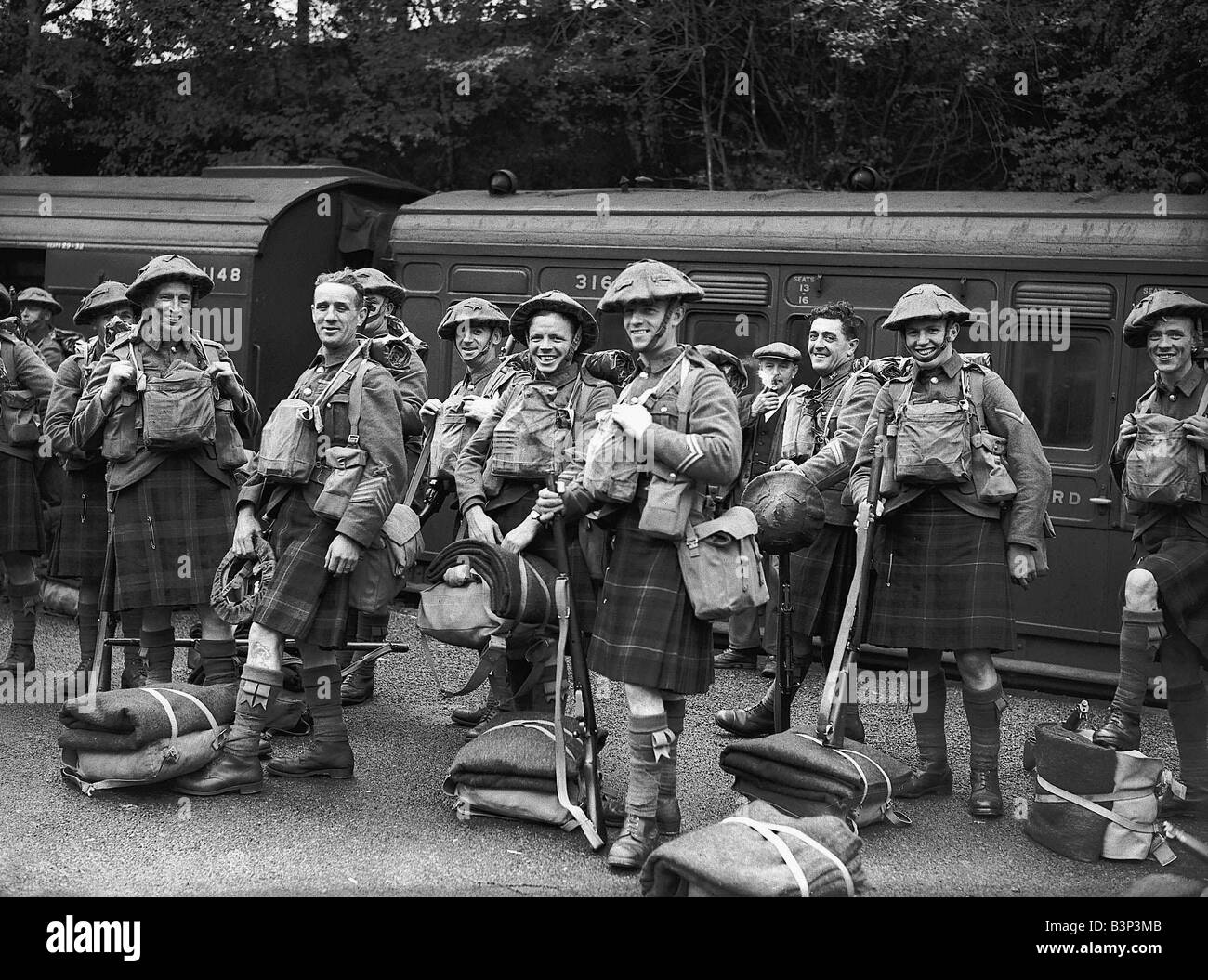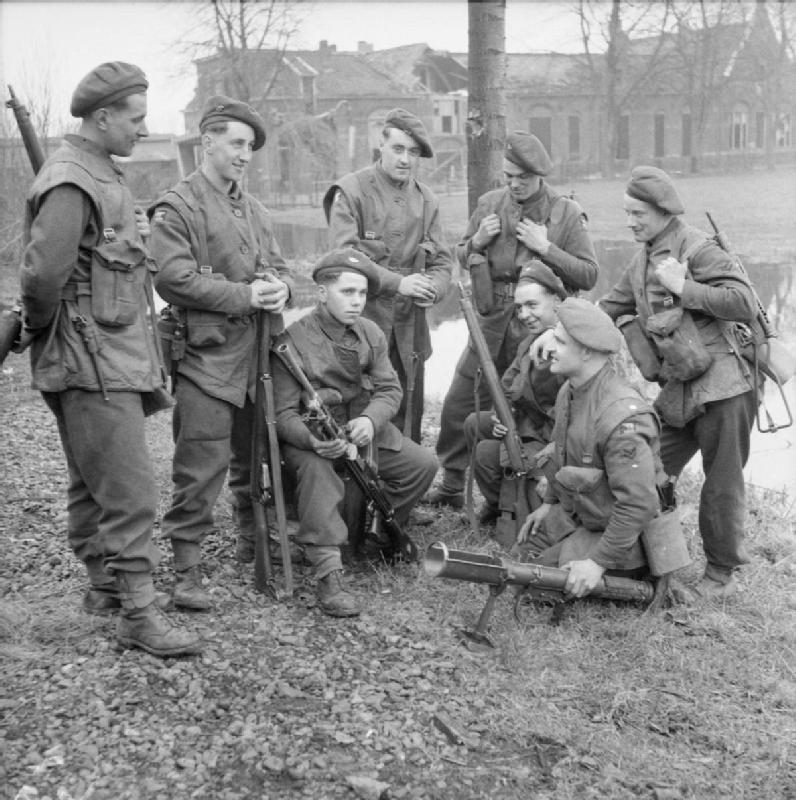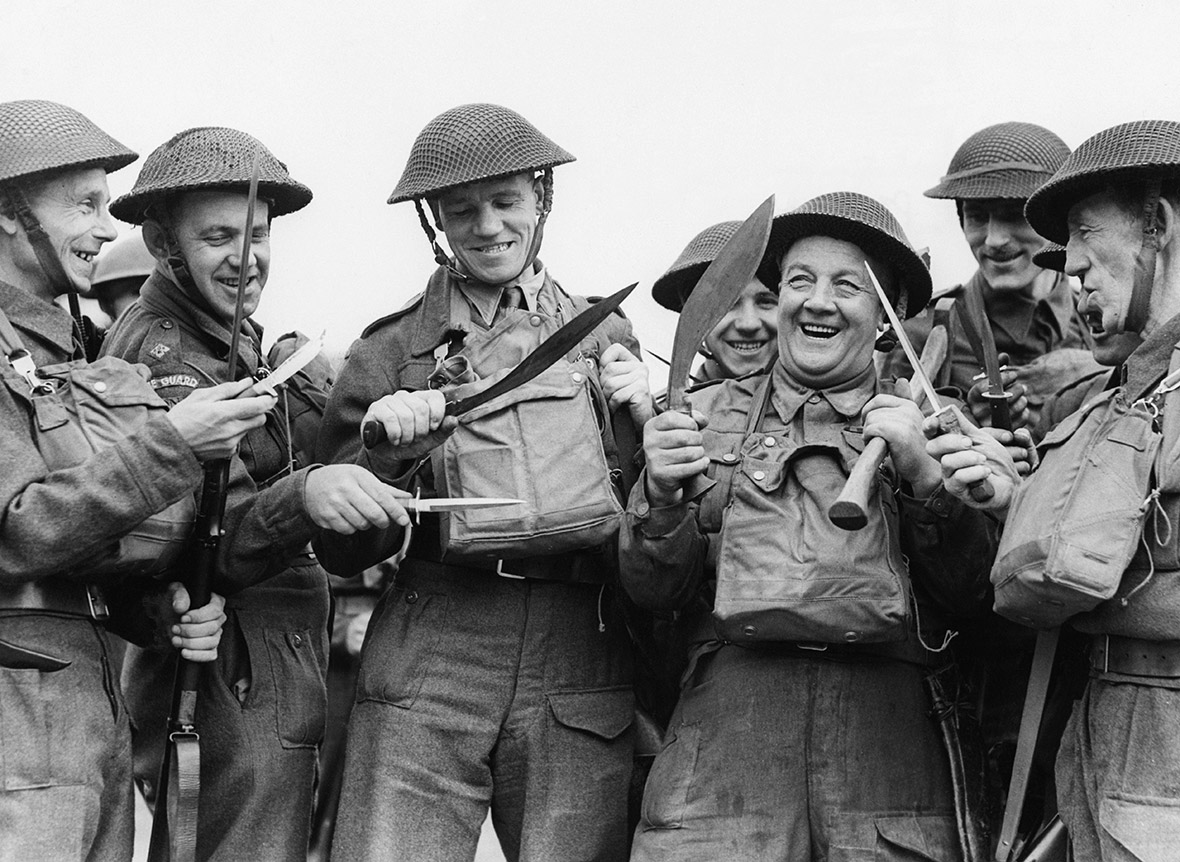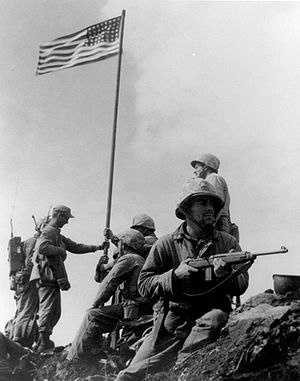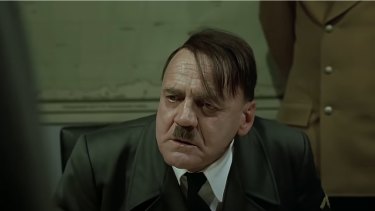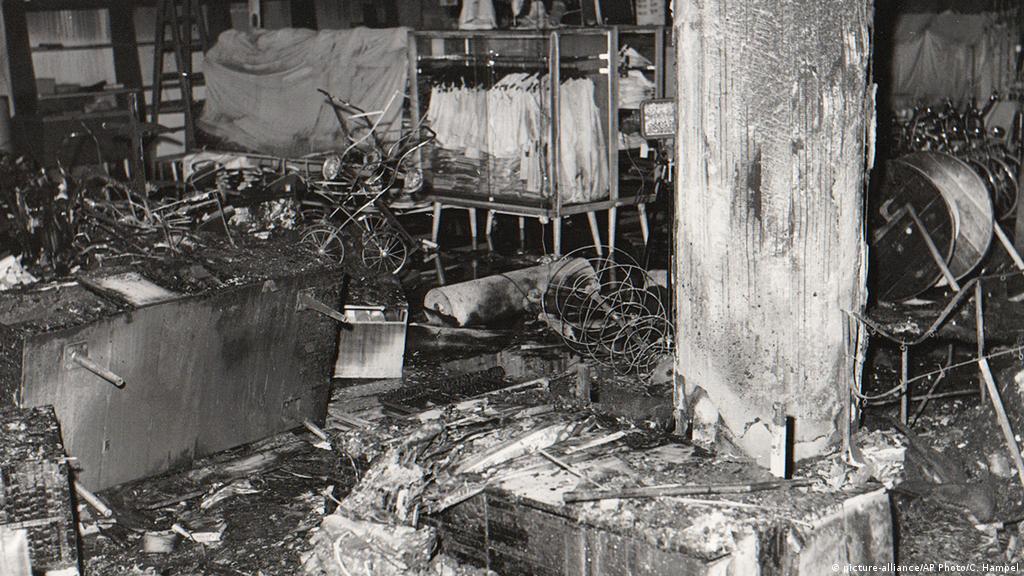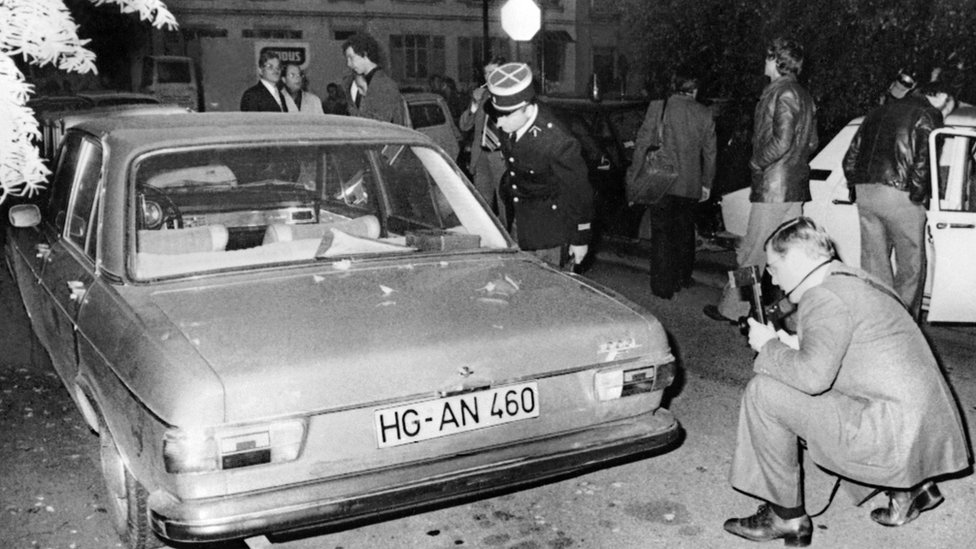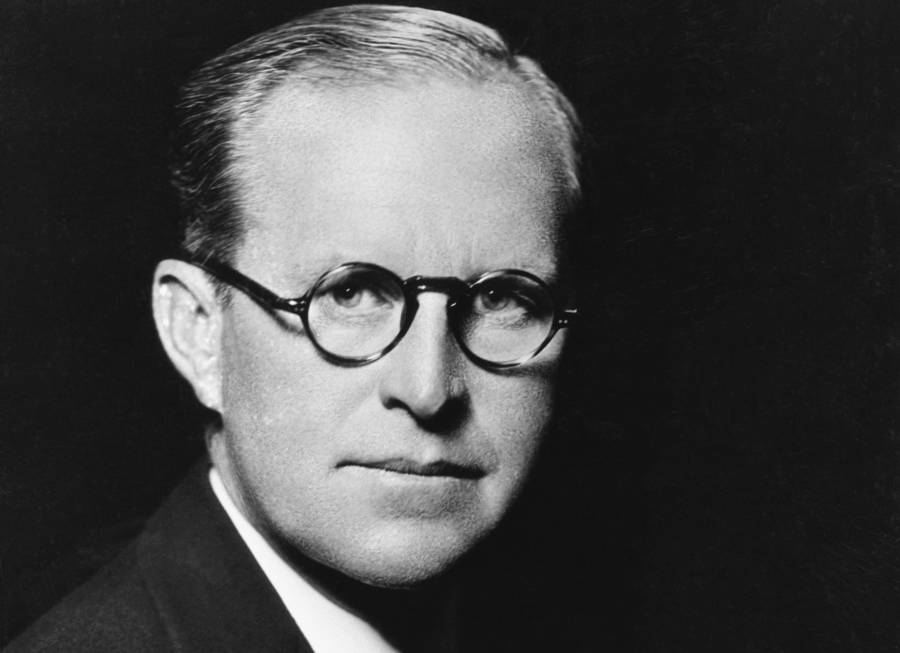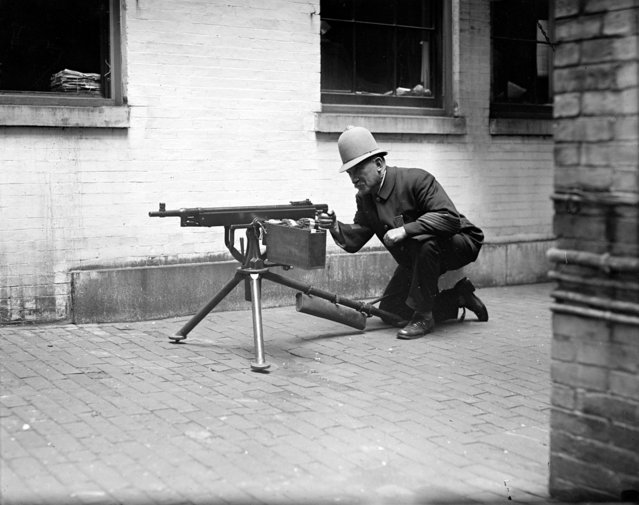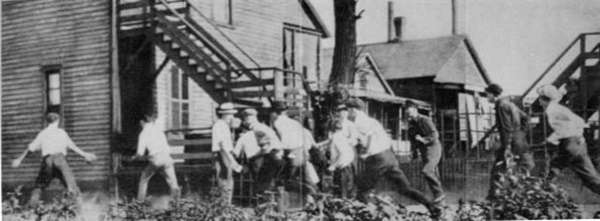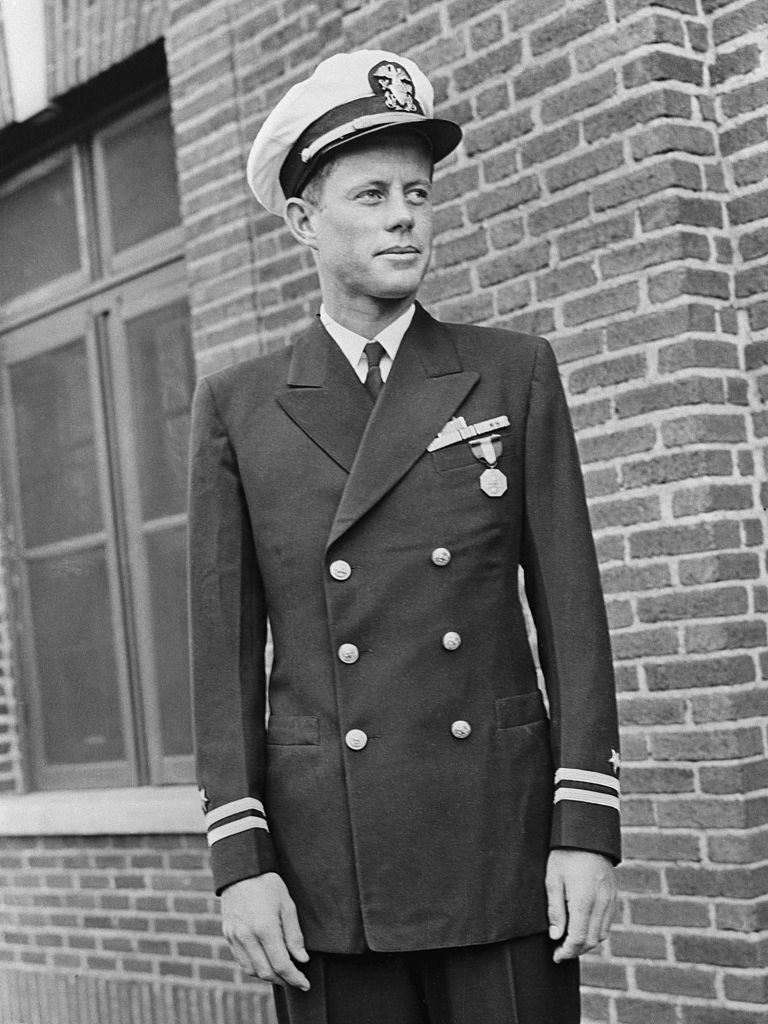President MacArthur and his envoy stepping foot on Philippine soil once again at Palo, Leyte, November 1941. After declaring his intention a few months back to "protect the Filipino people" from an impending Japanese invasion, the General and President of the United States arrives back on his "alma-mater" to the jubilee of the locals, who were finally thankful that the civil war had ended and that America was moving once again to protect the sovereignty of the Philippines from a foreign invader. Beside MacArthur is Vice President of the Philippines, Sergio Osmeña (far left, saluting), sent by Manuel Quezon to Washington to negotiate terms for the setting up of defenses on the islands. Locals who were loyal to the government of the country however had doubts on the return, and Ganap Party followers straight up condemned the allowance, claiming that "Mr. Quezon has sold the Philippines back to our former colonial overlords, and with it our independence." Shortly after the return, the Americans began the reorganization and training of the Filipino Army, in caution of a Japanese invasion. Emperor Hirohito continued to deny a planned invasion, citing that MacArthur "is crazy and is losing his mind." The Filipino-American Treaty was also signed a few weeks later, confirming the partnership in defense between the 2 countries.
Fengtian soldiers mounting a captured Type 24 HMG against National Army forces during Zhang Zuolin's drive towards Beijing, September 1941. The joint Fengtian-Japanese forces obtained victory after victory on their surprise attack towards the Qing Empire's capital, mostly due to the National Army's unawareness of the conflict. The Third Battle of Shanhai Pass ended in a Qing victory, delaying the Co Prosperity Sphere troops from moving onto the city itself. Wu Peifu showed his military genius in this war as well, to the expected observance of the Grand Marshal of Manchuria. The Japanese were preparing to send more soldiers to the front to bolster the GEACPS effort when Emperor Showa heard news of the American return to the Philippines, enabling him to change plans. The IJN and the Pacific forces of the IJA was to prepare for an invasion of the Philippines to be launched not later than late 1942 next year. This made the Fengtian forces run short of the Japanese reinforcements they need as units intended for them were being diverted to Taiwan to prepare for the planned attack, thus giving the National Army of the Qing to reorganize their forces for a proper defense of the country.
Japanese Navy destroyers bombarding Qing positions on land from the Bohai Bay in the midst of the push to Beijing, September 1941. The Imperial Japanese Navy made up for the lackluster naval forces of the Fengtian Government by providing them with mostly destroyers and frigates they didn't need, and have their most advanced assets act in support roles, mostly for taking out land targets from the sea, out of range of any Qing air forces. Japanese attaches and naval officers also often instructed and even trained crews of newly commissioned Fengtian ships for better performance on the battlefield. The combined navies also receive significant aid from Japanese naval air forces, launched from the aircraft carriers Kaga and Akagi, which were deployed to the area. The Co Prosperity Sphere had total naval superiority in the Bohai Sea and the encircling water bodies at first, at least before the German intervention. Fengtian and Japanese ships also outnumbered Qing naval forces 3 to 1, with the staggering presence of Tokyo's water fleet being too much for Wu Peifu's navy to handle at first, before German East Asia was ordered to intervene to protect German interests in China.
British Syndicate forces in the streets of Nancy, preparing for the German onslaught upon the city. Over the past months since the beginning of the war in January, the British Expeditionary Force to the French Commune (BEFFC) increased by 500,000, thus making the British number 950,000 in the Commune of France fighting against the Germans. The Union of Britain also began to activate its industry, left behind by the King during the 1925 Revolution. Thomas Mann, Secretary General of the TUC in the UoB, plans to send an additional 200,000 men to the frontlines, thus bringing combined Internationale forces to above 1,000,000 soldiers by the late parts of the year until the end of the war. A war time draft was declared in the Union, with men of 19 years and above being encouraged to enlist in the armed forces to serve their socialist French comrades in arms against the Kaiser. Propaganda was also very essential to the war effort as well, enabling the population to be loyal to the cause and be full on anti German. In all, 2,900,000 British Syndicates were drafted. 1,200,000 of them would be casualties.
King Edward VIII of the Dominion of Canada, and what remained of the British Empire, pictured minutes before his radio speech that officially declared that Operation Homecoming would be underway. The King was the son of the late George V, who had died of old age in 1937. His declaration on the radio was heard across the Dominion, and the entire world. Homecoming would be the grand pinnacle of the European Front of the Second Weltkrieg, but it wouldn't come until late 1942 due to certain logistical problems and the need to improve Canada's weak industry that would be needed to supply the invasion of the British Isles. The plan was to land in Wales and in Cornwall in a surprise move. The broadcast however was blocked from reaching Internationale soil, a contributing reason that would give the Entente the upper hand in the isles. Homecoming wasn't revealed to the UoB until only weeks before the operation, by a defecting Canadian who ran off from his unit, and by that time the Syndicates were totally engaged in mainland Europe.




